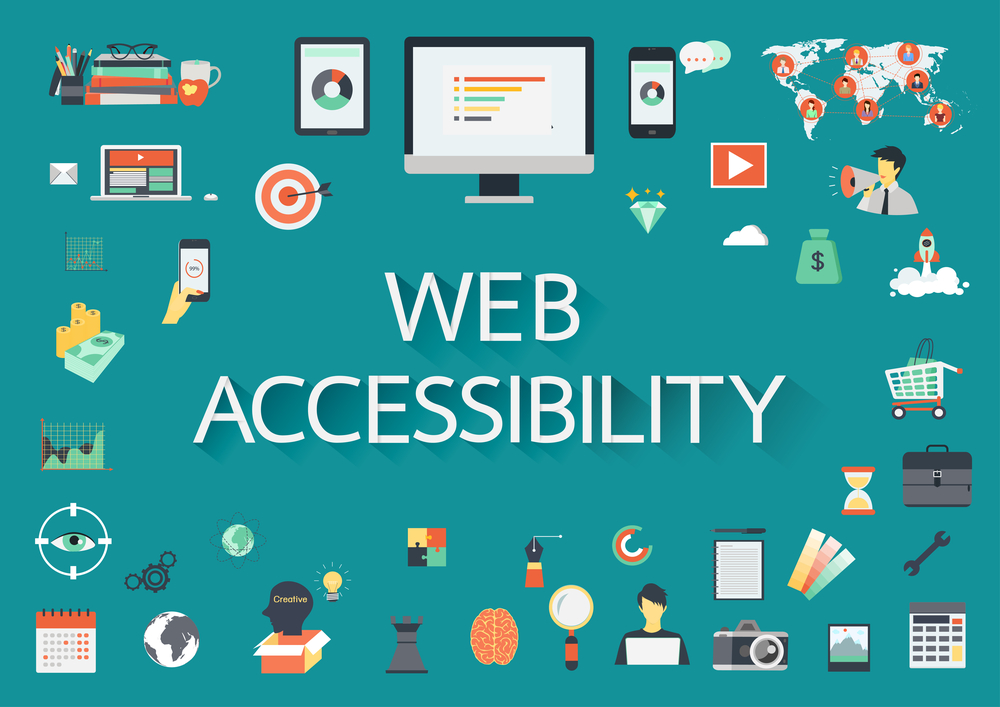13 March 2022

What is WCAG?
Statistics show that there are at least 2.2 Billion visually impaired people globally.
The Web Content Accessibility Guidelines (WCAG) are an important asset for businesses, organizations, and other entities who want to make their digital content accessible to all people. Just like the name states, WCAG is a step-by-step set of technical guidelines explaining how you can make your website, app or other digital properties accessible to people with various kinds of disabilities.
The set of guidelines specify what to look for when reviewing a website, application, or digital document for accessibility barriers. Most importantly, WCAG compliance, (although not the technically accurate phrase since WCAG is a set of guidelines and not law), means your business is conforming with WCAG standards, thereby complying with international, federal, state, or local regulations.
Universally Accepted Standards
What’s special about WCAG is that it’s developed by a working group of experts from around the world, and it’s been universally accepted and adopted. The World Wide Web Consortium (W3C) leads the international community that develops WCAG and WCAG compliance and conformance criteria. This group of staff, member organizations, and public members from all over the globe combine their expertise and energy to create important standards for the web.
The founder of the W3C is Sir Tim Berners-Lee, an England-based computer scientist. While Berners-Lee can’t take the credit for inventing the Internet itself, back in 1989 he came up with the world wide web (www): the organization of a space in which we all connect, using the Internet to communicate and exchange information with each other.
It’s noteworthy that he envisioned it as an open system, universally available to everyone. Therefore, WCAG embraces the initial vision of an open, accessible-to-all communication platform.
Versions of WCAG
WCAG compliance criteria takes into account the different ways that users with disabilities use the web, such as with assistive technology or keyboard-only access. WCAG exists in three versions: 1.0, 2.0, and 2.1, regularly updated to keep pace with changes in technology. The first version of WCAG, known as WCAG 1.0, was released in 1999. A later version, WCAG 2.0, came out in 2008, and for 10 years it was the most up-to-date and most universally accepted set of web accessibility guidelines available. In June 2018, the W3C released WCAG 2.1, which builds upon the guidelines in 2.0, including additional information about newer technologies, and addressed a broader range of disability-related needs. We anticipate the release of WCAG 2.2 in 2022.
WCAG itself is not, a piece of legislation, therefore not legally enforced. However, a best practice for your organization is to conform with WCAG 2.1 standards, making your experience as accessible as possible to as many people as possible.
Requirements for WCAG Compliance and Conformance
WCAG covers an exhaustive list of digital elements that can create barriers for people with disabilities. The guidelines address common barriers that prevent people from using digital platforms. Barriers can be tricky because unless they directly affect you, you might have an extremely difficult time knowing they exist.
The guidelines cover a wealth of success criteria for making a digital experience and ensuring it’s compliant with regulations. The following are just some examples of what the WCAG addresses.
New WCAG 2.2 Release Impacts 2021 Web Accessibility
• Conformance Levels
• All versions of WCAG contain three conformance levels: A, AA, AAA. Each conformance level has an increasingly higher standard of accessibility.
• Unless you know otherwise, focus on conforming to level AA before attempting to incorporate AAA. Even AA conformance can be quite a challenge to achieve.
• Additionally, level AA is invariably what laws around the globe require – no matter what version of WCAG they require.
• For example, the Accessibility for Ontarians with Disabilities Act (AODA) requires conformance with WCAG 2.0 AA for large (50+) and public sector organizations (and governmental entities) as of January 1, 2021.
What are some of the new changes with WCAG 2.2
The W3C has stated that this update provides additional support for people with cognitive and learning disabilities, users with low vision, and users with disabilities on mobile devices, all areas where WCAG 2.1 can be improved upon.
Nexonta Technologies Inc.
On to the next level.
Sources
Web Content Accessibility Guidelines (WCAG) 2.0 (w3.org)



